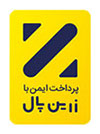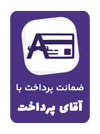Glossaries
In Ohio, HB 3 defines an LEP student as:
- between the ages of 3 and 21years,
- enrolled in an elementary or secondary school,
- having a language other than English as the native/home language, whether born in the U.S. or another country,
- having such difficulty speaking, reading, writing, or understanding English that the student may be unable to perform well enough in class or on state tests to meet expected state standards for achievement.
The placement of ELLs in regular education classes in which the language of instruction is the dominate language.
Synonyms: MBE
Also late-exit bilingual education. This is a program that uses two languages, L1 and English, as a means of instruction. The instruction builds on the L1 skills and develops and expands the English language skills of each student to enable him/her to achieve proficiency in both languages while providing access to academic content.
Texts that demonstrate different writing traits of writers. Teachers can use such texts to illustrate high-quality writing to students.
An awareness of the structure and function of language that allows one to reflect and consciously manipulate the language.
The study of meaningful units of language and how they are combined to form words.
The name given to the restricted sort of language spoken by mothers and other primary caregivers to their young children, the main function of which is to teach the child the basic function and structure of language. Adults make an unconscious effort to stretch the signals, exaggerate the acoustic components that are exactly the dimensions that the baby needs to pay attention to in order to form the mental maps for speech.
The term can refer to an individual speaker who uses two or more languages or a community of speakers in which two or more languages are spoken.
Teachers are licensed with bilingual endorsement or fluency in the language of instruction as determined by a national proficiency test. Language arts instruction focuses on developing oral language, reading and writing skills in the students’ first language. Teachers fluent in students’ native language provide instruction using instructional techniques, methodology, and curriculum in students’ primary language.
Separate, relatively self-contained educational interventions designed to meet the academic and transitional needs of newly-arrived immigrants. Typically, students attend newcomer programs before they move into more traditional interventions.
Physical communication such as gestures, facial expressions, and physical proximity that support oral communication.

 Persian
Persian  English
English  Arabic
Arabic 



